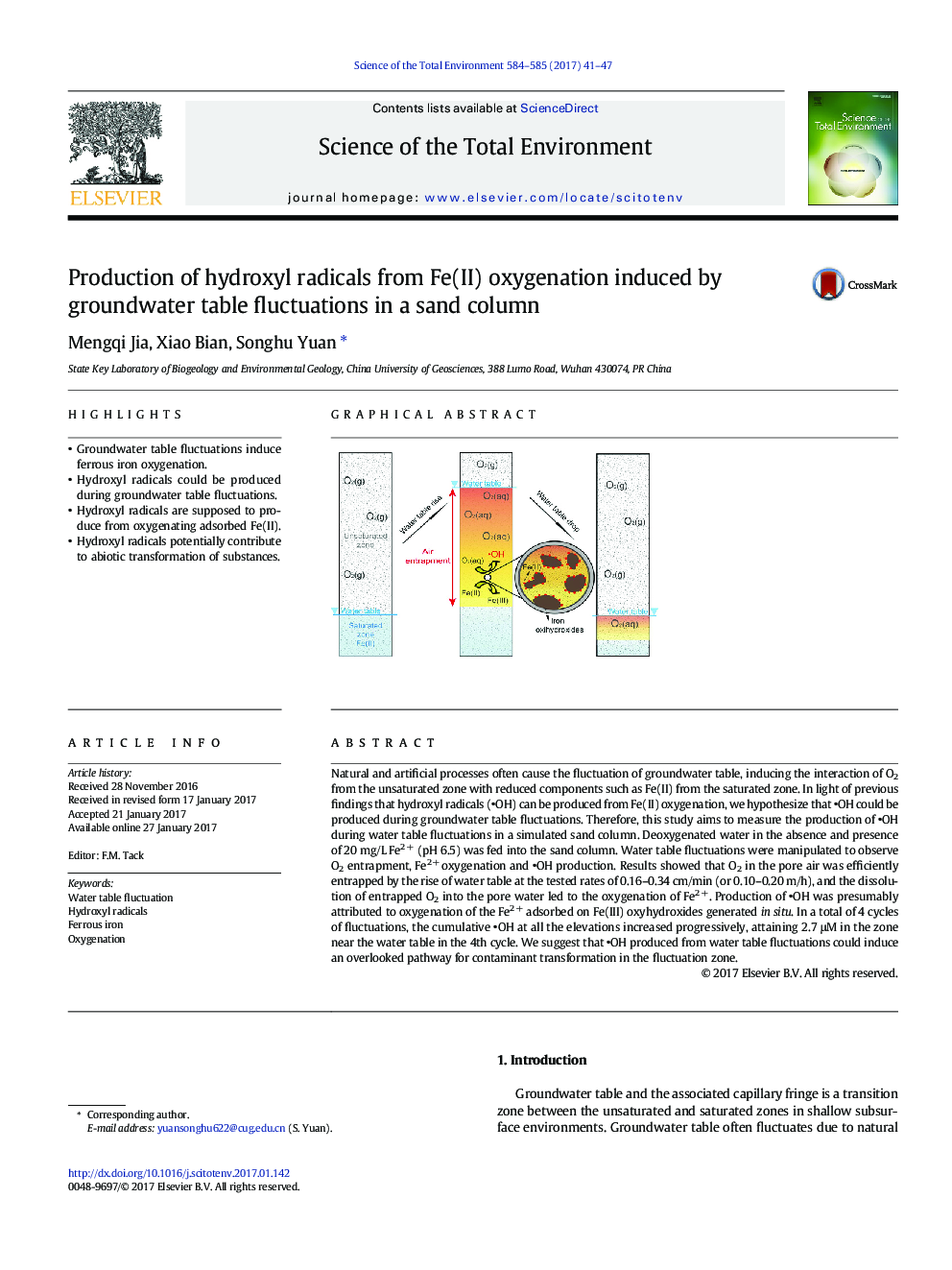| Article ID | Journal | Published Year | Pages | File Type |
|---|---|---|---|---|
| 5751847 | Science of The Total Environment | 2017 | 7 Pages |
â¢Groundwater table fluctuations induce ferrous iron oxygenation.â¢Hydroxyl radicals could be produced during groundwater table fluctuations.â¢Hydroxyl radicals are supposed to produce from oxygenating adsorbed Fe(II).â¢Hydroxyl radicals potentially contribute to abiotic transformation of substances.
Natural and artificial processes often cause the fluctuation of groundwater table, inducing the interaction of O2 from the unsaturated zone with reduced components such as Fe(II) from the saturated zone. In light of previous findings that hydroxyl radicals (OH) can be produced from Fe(II) oxygenation, we hypothesize that OH could be produced during groundwater table fluctuations. Therefore, this study aims to measure the production of OH during water table fluctuations in a simulated sand column. Deoxygenated water in the absence and presence of 20 mg/L Fe2 + (pH 6.5) was fed into the sand column. Water table fluctuations were manipulated to observe O2 entrapment, Fe2 + oxygenation and OH production. Results showed that O2 in the pore air was efficiently entrapped by the rise of water table at the tested rates of 0.16-0.34 cm/min (or 0.10-0.20 m/h), and the dissolution of entrapped O2 into the pore water led to the oxygenation of Fe2 +. Production of OH was presumably attributed to oxygenation of the Fe2 + adsorbed on Fe(III) oxyhydroxides generated in situ. In a total of 4 cycles of fluctuations, the cumulative OH at all the elevations increased progressively, attaining 2.7 μM in the zone near the water table in the 4th cycle. We suggest that OH produced from water table fluctuations could induce an overlooked pathway for contaminant transformation in the fluctuation zone.
Graphical abstractDownload high-res image (434KB)Download full-size image
